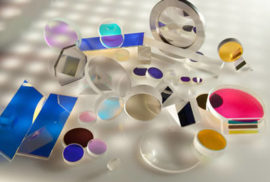
When a person has been doing a function for some time, they forget the basics. This can happen in a lot of different ways. For me, this has become evident in how I keep skipping over some of the fundamental components of vapor deposition when writing blog posts. I am not doing this purposely. I am not really sure of the reason. I think it could be that I do this because in my mind I have already taught on these subjects. It could also be that I am concentrating on and learning more in depth things myself. But, as I visit customers and discuss issues/problems they may be having, the issues often come back to the basics. So, for my next few technical blog posts, I would like to cover some of the basics in the hopes that this is beneficial for all of us.
Here are the topics I will be covering:
- Vacuum
- Ultrasonic practices and etching
- Degassing
- Deposition parameters and their effects
Today’s topic is vacuum and the importance of maintaining vacuum stability (stoichiometry) during the deposition process. To start, let’s discuss why we make our coatings in a vacuum and some of the basic guiding principles of vapor deposition. This image (an internet image that captures the idea concisely) conveys one of the main reasons why we make our coatings in a vacuum: when a molecule impacts another molecule, it changes direction.
Knowing that, and that we are using Physical Vapor Deposition (be it Electron Beam Gun, Ion Source, Thermal Evaporation, Sputter), it is imperative that the molecules (“vapor”) are able to travel, unimpeded, from the evaporation source to the lens(es).
The average distance a molecule can travel without impacting another molecule is called the “mean free path”. To increase this distance, we remove as many of the molecules as necessary to create a distance that is equal to or greater than the distance between the evaporation source and the lens(es).
Once this is achieved, evaporation can take place, but the end result (coating) on the lens is subject to the vacuum pressure and the contents of the vacuum chamber at that pressure. Let me expand. If the pressure in the chamber is 2 x 10-4 mbar and evaporation is performed, the result will be different than if the pressure in the chamber is 5 x 10-5 mbar. This is understood. But, if evaporation takes place at 2 x 10-4 mbar repeatedly can the result vary? Yes. At that pressure, even though the pressure is the same, the contents of the chamber can vary to achieve that pressure. Water vapor affects the coatings on the lens differently than nitrogen does. This becomes even more important when using reactive gas materials, such as EB Gun evaporation of TiO2 or ZrO (to make ZrO2).
So, if we can use different components (molecules) to make up vacuum pressure, we either need to:
Get to a very good starting pressure such as 8 x 10-6 mbar to ensure that all unwanted molecules are removed. This takes a lot of time and, consequently, money. Or,
Get to a starting pressure of 5 x 10-5 mbar while carefully controlling the contents of the chamber. This is commonly known as “keep the same level of dirty”. To do this, shield changes must be performed at designated intervals, humidity must be controlled in the AR room, and proper handling of all parts must be performed.
What I often see at customer locations is the coatings shifting from run to run or throughout the day. This can be for several reasons. Most commonly, the cleanliness of the chamber is not maintained, or the humidity in the room is fluctuating throughout the day, or both. Secondarily, shields are cleaned but not wiped down with IPA/Acetone and/or outgassed.
Understanding why we make our coatings in vacuum is very important to the science of what we are doing. But, it is also just as critical to ensure that we are keeping our vacuum pressures stable so that we can make the same coatings repeatedly. What we are doing on a daily basis is highly scientific and complicated, but most of it can be boiled down to the basics.





